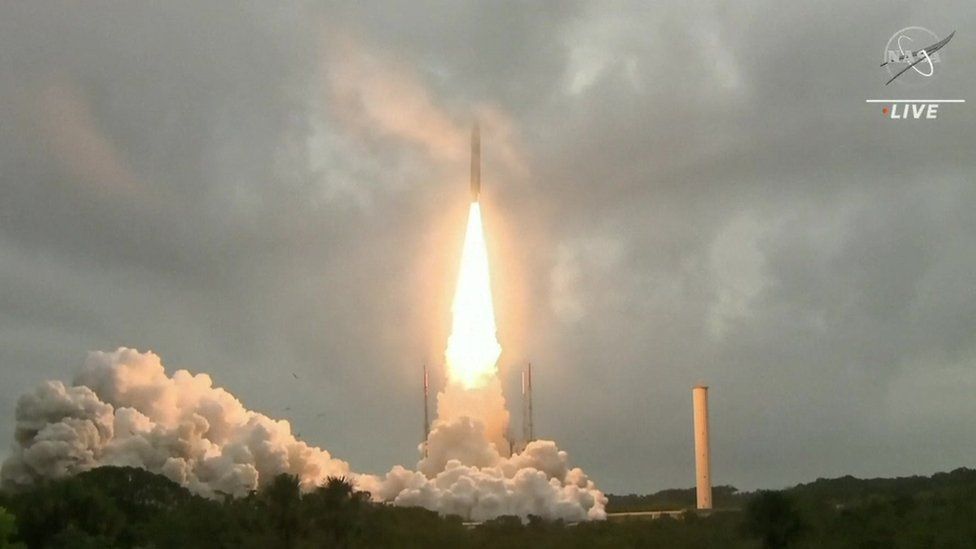
James Webb–telescope that will unravel mysteries of universe–takes off

The biggest space telescope ever conceived went into orbit at a little past 5.50 pm Indian Standard Time (IST) on Saturday (December 25).
The $10 billion James Webb Space Telescope was launched on a European Ariane rocket from French Guiana.
The project took 30 years to design and build and was regarded as one of the greatest scientific endeavours of the 21st Century.
The James Webb – provided it works as expected – will show the very first stars and galaxies to shine in the Universe.
It will also have the power to probe the atmospheres of distant planets to look for gases that might hint at the presence of life.
The rocket took off from the equatorial Kourou spaceport, at 09:20 local time.
The 6.5-metre diameter infrared-optimised telescope is designed to study an extremely wide range of astrophysical phenomena, including the first stars and galaxies that formed, the atmospheres of nearby planets outside our solar system, and objects within our own solar system.
The spacecraft itself, comprised of the vehicle bus and sun-shield, experienced delays during its integration and testing.
The additional environmental testing time of the fully assembled observatory – the telescope and the spacecraft – will ensure that the Webb will be fully tested before launching into space, NASA said.
“The spacecraft and sun-shield are larger and more complex than most spacecraft,” said Eric Smith, programme director for the James Webb Space Telescope at NASA.
“The combination of some integration activities taking longer than initially planned, such as the installation of more than 100 sun-shield membrane release devices, has meant the integration and testing process is just taking longer,” said Smith.
“Considering the investment NASA has made, and the good performance to date, we want to proceed very systematically through these tests to be ready for a spring 2019 launch,” he said.

